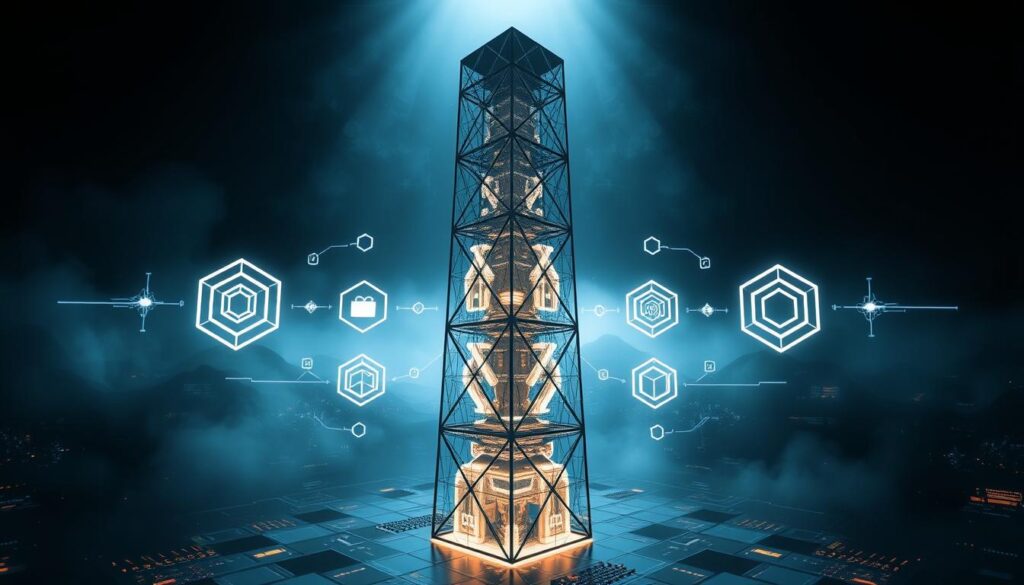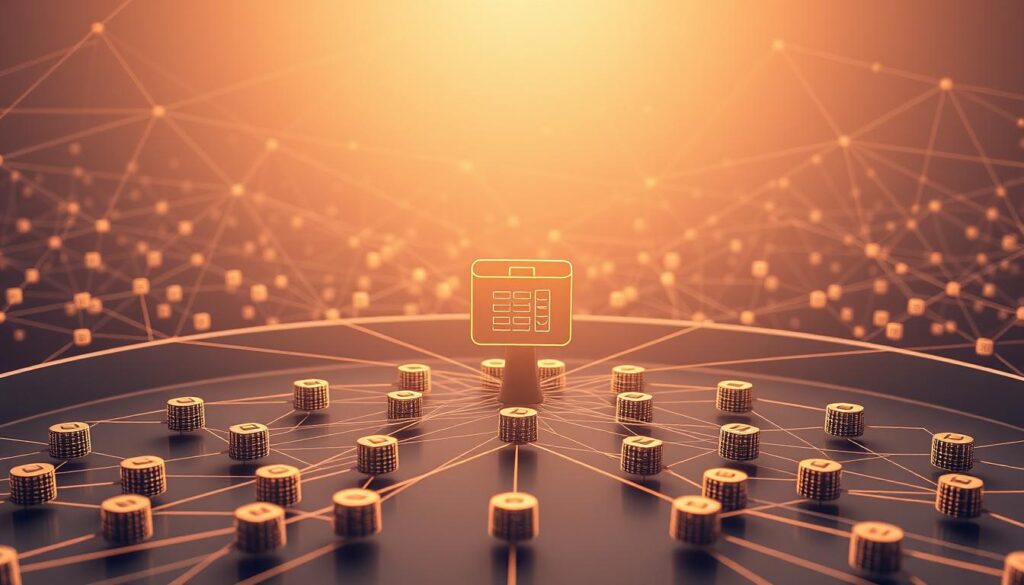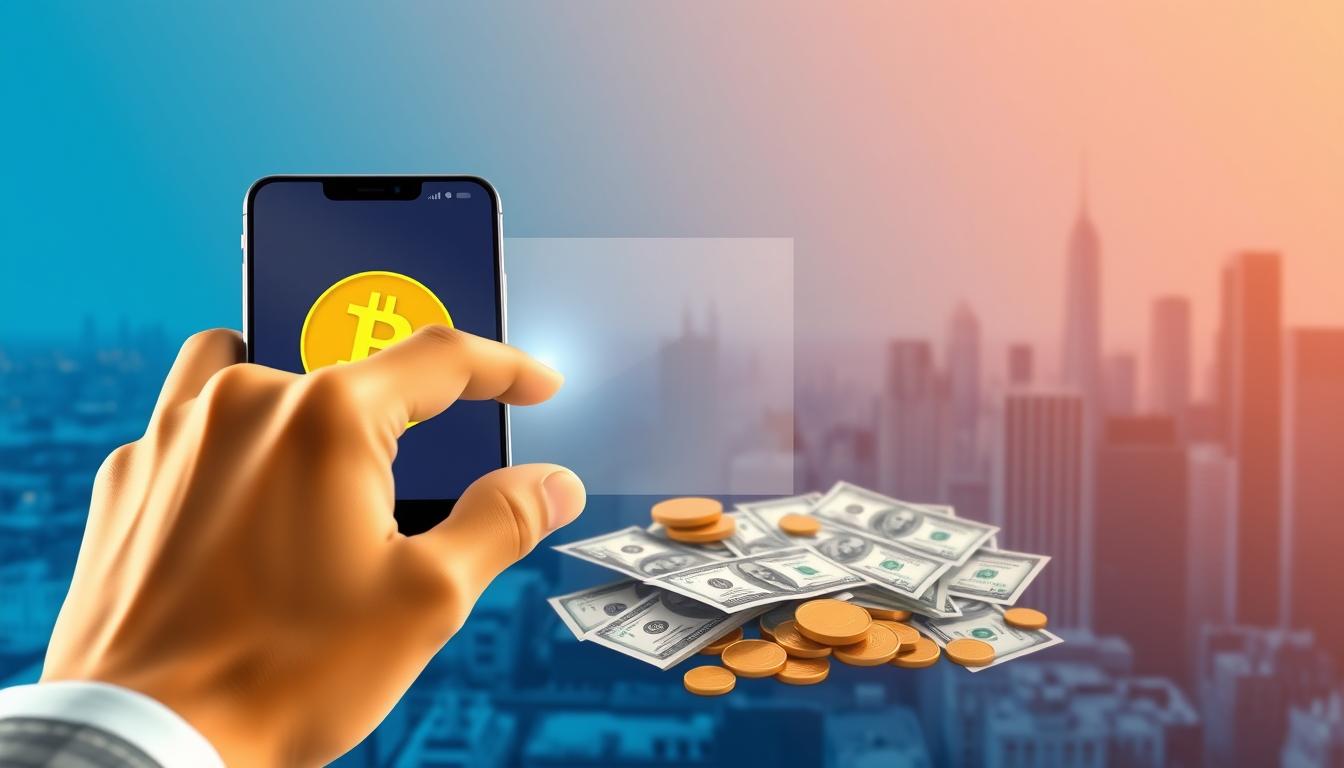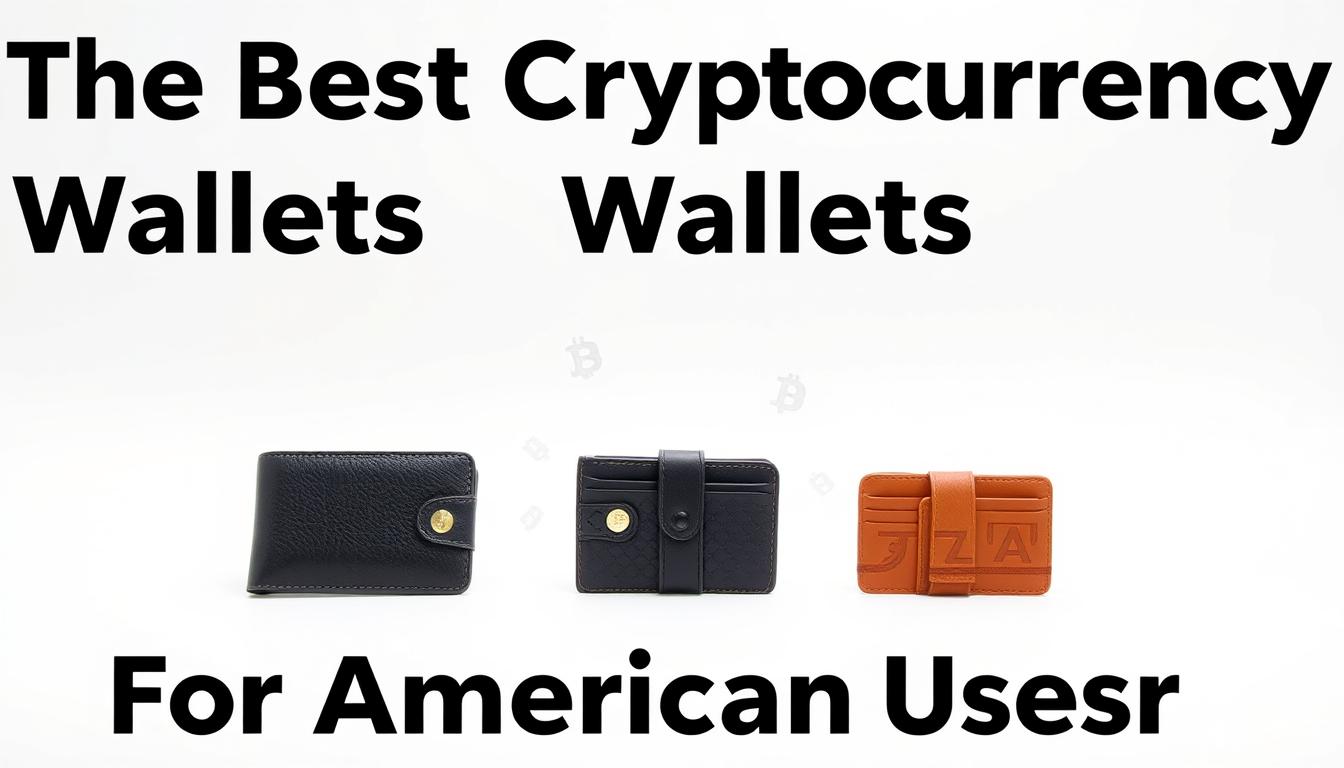Now Reading: Decentralized Apps: Unleash the Future of Technology
- 01
Decentralized Apps: Unleash the Future of Technology
Decentralized Apps: Unleash the Future of Technology

Decentralized applications, or dApps, are changing the digital world. They move away from old systems controlled by companies or governments. Instead, dApps run on blockchain networks like Ethereum, making things more open and giving users control.
Web 3.0 is making these tools even more important. They’re used in finance and social media, offering secure data storage and smart contracts. These smart contracts make agreements automatic, without needing middlemen.
Key Takeaways
- Decentralized applications prioritize user control over data and services.
- dApps use blockchain to eliminate single points of failure, enhancing security.
- Web 3.0 enables new possibilities like decentralized finance (DeFi) and NFTs.
- Smart contracts automate trust in dApps without intermediaries.
- Popular platforms like Ethereum host thousands of real-world dApps today.
Understanding Decentralized Applications in the Digital Age
Decentralized applications (dApps) change how technology works. They don’t rely on central servers like old apps do. Decentralized applications run on blockchain networks, removing single control points. This makes them more open and secure for users.
What Makes an Application “Decentralized”
- Open-source code: All dApps have code that everyone can see and check.
- Peer-to-peer networking: Users share data directly, without middlemen.
- Cryptographic security: Blockchain’s encryption keeps transactions safe from tampering.
The Evolution from Web 2.0 to Web 3.0
Web 2.0 was all about big companies controlling our data. But Web 3.0 is different. It puts control back in our hands. Now, we can have social networks and markets where we make the rules together.
Key Components of Modern dApps
Every decentralized application has three main parts:
1. Front-end interfaces: These are easy-to-use parts that let us interact with the blockchain.
2. Consensus protocols: These are like rules that make sure everything is fair and square.
3. Token systems: These are special currencies that let us earn rewards and vote on things.
The Blockchain Foundation: How dApps Function
Blockchain technology is at the heart of every dApp. It ensures security and transparency without needing a central authority. This tech uses a shared digital record, updated by thousands of computers.
Each action in a dApp is recorded as a “block” in this chain. This creates a permanent history that can’t be changed.
Three main principles make this system work: immutability, which stops data from being altered; consensus mechanisms like Proof of Work or Proof of Stake, ensuring everyone agrees; and decentralized storage, which avoids single points of failure. These features allow dApps to run on their own, without outside interference.
Public blockchains, like Ethereum’s, welcome everyone to join in. They’re perfect for global dApps. Private blockchains, on the other hand, limit access and are better for business use.
Cryptocurrency often drives these systems. Tokens can pay for fees, reward users, or help decide app rules. For example, ETH is used for Ethereum-based dApps, while custom tokens encourage community involvement.
Every time you use a dApp, like trading on a DeFi platform, the blockchain logs your action forever. This makes dApps safe from fraud and censorship. Trust is built through code, not middlemen.
Smart Contracts: The Building Blocks of Decentralized Applications
Smart contracts are self-executing programs that power the automation at the heart of dApps. They enforce agreements without the need for intermediaries. This ensures actions only happen when conditions are met. Blockchain technology makes this possible by creating transparent, tamper-proof systems.
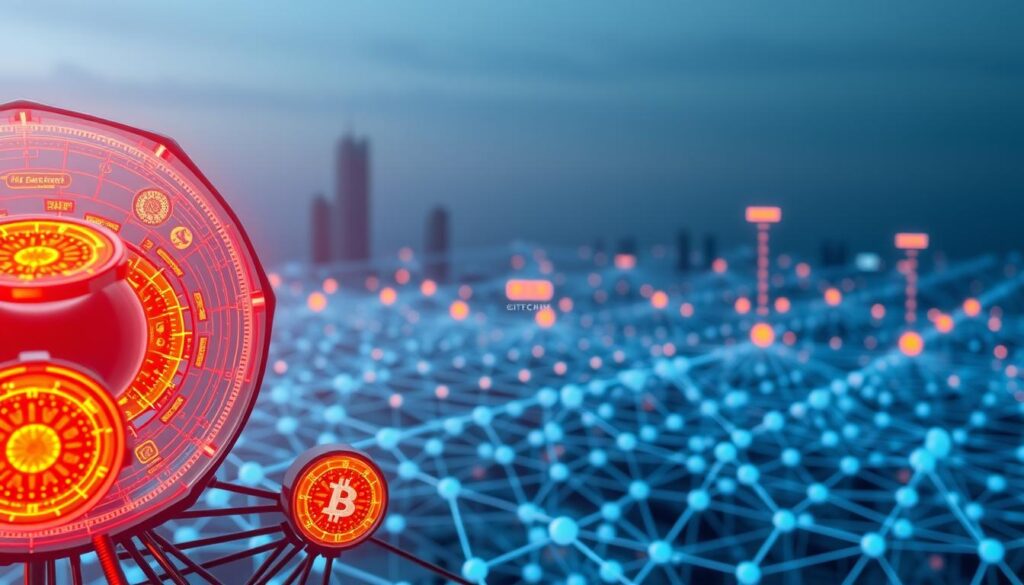
How Smart Contracts Automate Processes
Imagine a rental agreement where payment unlocks a digital key automatically. Smart contracts use “if-then” logic to do this. For example, a farmer’s crop sale could trigger insurance payouts when weather data meets predefined drought conditions. This eliminates delays and human error.
Popular Smart Contract Platforms
- Ethereum leads with its vast ecosystem and Solidity language, enabling complex applications like DeFi and NFTs.
- Solana and Cardano offer faster transaction speeds, reducing costs for high-volume tasks.
- Developers choose based on speed, fees, and developer tools, with Ethereum remaining the most widely adopted.
Writing Your First Smart Contract
Beginners can start with Ethereum’s Solidity. Simple steps:
- Install Remix IDE to write and test code.
- Use templates for basic functions like token transfers.
- Test on testnets before deployment to avoid costly mistakes.
Security is critical—always audit code to prevent vulnerabilities like fund leaks or bugs.
Ethereum and Beyond: Popular Platforms for dApp Development
Blockchain technology has changed how dApps work. But, picking the right platform is key for developers. Ethereum leads in this field, thanks to its smart contracts and support. Yet, it faces challenges in scaling.
Ethereum’s Pioneering Role in dApp Ecosystems
Ethereum was the first to offer a scalable space for dApps. It lets developers write code securely and openly. With updates like proof-of-stake and Polygon, it’s gotten better.
Now, over 3,000 dApps run on it, from DeFi to NFTs. Its solid developer community and strong tools keep it at the heart of the ecosystem.
Alternative Blockchain Platforms for Developers
- Solana: Fast transactions and low fees, great for gaming and DeFi.
- Avalanche: Quick finality and easy connection between blockchains.
- Cosmos: Modular design for growing, customizable dApps.
- Binance Smart Chain: Cheap for testing, perfect for quick prototyping.
Choosing the Right Platform for Your dApp
Think about transaction speed, gas costs, and tools available. For security, Ethereum might be best. But, if speed is key, Solana could be better.
Compare tools like Truffle for Ethereum and Cosmostation for Cosmos. Also, consider the community size and how well-documented the platform is. This affects your app’s long-term success.
Getting Started with dApps: A Beginner’s Guide
Starting with decentralized applications (dApps) means getting the right tools. First, install a crypto wallet like MetaMask or Trust Wallet. These wallets connect you to blockchain technology. They help you store digital assets safely and sign transactions.
Begin by setting up a wallet account. Remember to write down your recovery phrases on paper and keep them safe. Before using real money, practice with test tokens on blockchain test networks. Always check gas fees, which are costs for actions on the network, before you confirm.
- Swap tokens on Uniswap (a DeFi dApp)
- Play games like Axie Infinity
- Explore NFT marketplaces such as OpenSea
When using any dApp, make sure the URL is correct to avoid scams. Start with low-risk actions like browsing dApp stores or joining communities on Discord. Learn about blockchain explorers like Etherscan to track transactions and verify contract addresses.
Be careful and test things out. Use test networks (like Rinkeby for Ethereum) to practice without risk. Join forums or follow guides from Crypto.com to learn how to fix common problems like failed transactions or network congestion.
Decentralized Finance (DeFi): Revolutionizing Financial Services
Decentralized finance (DeFi) changes how we move money using blockchain technology. It lets people trade directly with each other, skipping banks. This cryptocurrency world uses smart contracts for lending, trading, and earning, reaching millions.

DeFi Lending and Borrowing Platforms
Places like Aave and Compound let you lend or borrow crypto. You need to put up more value than the loan to avoid losing it. MakerDAO’s Dai stablecoin shows how to keep things stable even when markets are shaky.
Decentralized Exchanges (DEXs)
DEXs like Uniswap and Curve use smart tech to match trades. They cut out middlemen, saving you money. High-speed traders prefer dYdX, which still uses blockchain technology for fair prices.
Yield Farming and Liquidity Mining
Yield farming rewards you for putting funds into certain projects. But, it comes with risks like price drops and tech bugs. Yearn.finance was a big start, drawing in billions. Yet, it’s key to watch out for risks like losing value.
NFTs and Digital Ownership in the Decentralized Space
Non-fungible tokens (NFTs) change how we own digital things. They use blockchain technology to make sure each item is unique. This lets creators prove their work is real, track where it came from, and make money from digital items through decentralized applications.
Whether it’s art, music, or virtual land, NFTs put ownership in the hands of the creator. They do this with special codes that prove who owns what.
Creating and Trading Digital Assets
Creators make NFTs by writing smart contracts on platforms like Ethereum. They use standards like ERC-721 for single items or ERC-1155 for groups. This makes sure each item is unique.
Storage like IPFS keeps the details of each item safe. But, the cost of sending these items can vary. Tools like MetaMask make it easier for creators to sell their work on marketplaces.
- Step 1: Choose a blockchain (e.g., Ethereum) and development framework
- Step 2: Code the NFT contract with attributes and royalties
- Step 3: Deploy and mint tokens using wallet services
NFT Marketplaces and Communities
Places like OpenSea and Rarible are big for trading NFTs. They have tools for auctions and even letting people own a part of something. This creates a buzz around projects like Bored Ape Yacht Club.
These communities are where people come together. They share a love for something unique. Owning something special can get you into exclusive events or even let you help decide how things are run in decentralized applications.
Beyond Art: Practical Applications of NFTs
In gaming, The Sandbox uses NFTs for items that can be used in different games. This makes playing games more interesting. Real estate is also getting into NFTs, making property deeds digital.
Even big brands like Nike are using NFTs to prove their products are real. And, people are looking into using NFTs for things like school records and medical history on blockchain technology.
Social Media and Communication dApps
Traditional social media is criticized for privacy and control issues. Decentralized apps (dApps) offer new ways, based on Web 3.0. Platforms like Mastodon and Minds let users control their content, avoiding corporate control.
The Lens Protocol and Mirror help creators earn money directly. Status and Matrix focus on private messaging between users.
dApps use peer-to-peer networking, storing data on many nodes, not one server. Users control their data with self-sovereign identities. This lets them move profiles and content freely.
Token incentives reward those who contribute, creating value for all.
But, there are challenges. Security often comes at the cost of ease, slowing growth. Scalability issues make it hard to use these platforms widely. Finding content can be tough, unlike on centralized apps.
Yet, despite these hurdles, growth continues. Mastodon saw a surge in users after criticism of algorithms. This shows people want platforms that are transparent.
Web 3.0’s goal of empowering users is becoming a reality. As these tools get better, decentralized social media could change how we connect online. It can do so without losing privacy or control.
Decentralized Autonomous Organizations (DAOs): Collective Governance
Decentralized apps like DAOs use blockchain technology and smart contracts for self-governance. They let members vote on proposals with tokens. This aims for fair and open decision-making.

How DAOs Make Decisions
DAOs have voting systems like token-weighted voting. This means members’ influence depends on how many tokens they hold. Other methods, like quadratic voting, cost more tokens to vote, preventing big stakeholders from dominating.
Delegation allows members to give votes to trusted users. This balances efficiency with inclusivity. But, issues like low voter turnout or token concentration are still problems.
Notable DAO Success Stories
- MakerDAO manages the DAI stablecoin’s stability through member votes.
- Gitcoin funds open-source projects via community-driven grants.
- Uniswap DAO governs its decentralized exchange’s protocol updates.
Starting Your Own DAO
To start a DAO, choose platforms like Aragon or DAOhaus. There, you can draft rules with smart contracts. Getting legal advice is key to follow rules.
Locking treasury funds in smart contracts until approved by votes is crucial. Building a dedicated community through forums or social media is vital for success.
Security Considerations When Using Decentralized Applications
Keeping assets safe on blockchain technology is crucial. Smart contracts and cryptocurrency wallets face many dangers. These include reentrancy hacks and phishing scams.
Attackers look for code flaws or user errors to steal money.
Common threats include:
- Reentrancy attacks manipulating code execution
- Flash loan exploits using borrowed funds to destabilize systems
- Oracle data manipulation skewing automated decisions
History shows costly failures: The 2016 DAO hack drained $50M due to unchecked code. Modern safeguards include:
- Third-party audits for smart contracts
- Bug bounty programs rewarding vulnerability reports
- Multi-step deployment to test before full release
Users must protect private keys and check transactions. Be wary of unsolicited links or high gas fee spikes. New tools like automated monitoring and insurance help reduce risks.
While blockchain technology is open, this openness also lets hackers study it. Always double-check NFT purchases and DEX trades.
Security needs constant improvement. Developers update protocols, and users learn to spot threats. Education and caution are key in this changing world.
The Technical Architecture Behind dApps
Creating dApps involves three main layers: user interface design, blockchain integration, and deployment. Each step needs to mix creativity with solid coding skills.
Front-end Development for dApps
Frameworks like React and Vue.js make up the user interface. Developers link these interfaces to blockchain networks using Web3.js or Ethers.js. They face challenges like showing transaction confirmations and making wallet addresses easier to read.
Important things to keep in mind include:
- Responsive design for MetaMask and hardware wallet compatibility
- Progress indicators for pending smart contract transactions
- Modals for confirming gas fees and transaction hashes
Back-end Integration with Blockchain
The back-end talks to blockchain nodes through JSON-RPC APIs. It’s crucial to keep private keys safe using tools like HD Wallets. Developers should:
- Implement middleware for smart contract event listening
- Use off-chain servers for non-critical computations
- Design retry mechanisms for failed transactions
Testing and Deploying Your dApp
Testing starts with local environments like Hardhat, which mimic blockchain scenarios. Deployment involves:
- Deploying smart contracts to testnets like Rinkeby
- Running static analysis tools (Slither, MythX)
- Monitoring production dApps with tools like Chainlink Oracles
After launching, it’s important to watch gas usage and on-chain activity.
Overcoming Common Challenges in dApp Development

Developers working on dApps face big challenges like slow speeds, high costs, and hard-to-use interfaces. These issues keep many people from using blockchain technology. Let’s look at solutions that are changing this.
Scalability Solutions
Layer 2 networks like Ethereum’s Optimistic Rollups and ZK-Rollups help by processing transactions off-chain. This makes them much faster, handling over 4,500 transactions per second. Projects like Arbitrum and Polygon also cut down on delays without losing security.
Sharding splits Ethereum’s data storage, which helps reduce congestion. Each solution finds a balance between speed, cost, and keeping things decentralized.
Managing Gas Fees and Transaction Costs
Ethereum’s EIP-1559 helps by burning extra ETH, which reduces fee swings. Developers use tools like contract code compression and batched transactions to save money. Users can also save by timing their transactions during off-peak hours.
Services like Portis offer gasless meta-transactions, making things even cheaper. This way, users can enjoy lower costs without sacrificing security.
User Experience Improvements
New dApps use simple interfaces to hide complex blockchain tech. On-ramps like Coinbase Wallet make it easy to start with just a credit card. MetaMask’s easy approvals and Uniswap’s step-by-step swaps make using decentralized finance simple.
Progress bars and visual feedback help users understand complex blockchain processes. This makes using dApps more user-friendly and less overwhelming.
Real-World Success Stories: dApps Changing Industries
Decentralized applications (dApps) are making a real difference. Platforms like Uniswap show their power. Uniswap, a decentralized exchange, has changed finance by handling over $100B in trades.
- Axie Infinity: This game lets players earn real money in the Philippines. It uses blockchain to make gaming a job, but faces market ups and downs.
- Gitcoin: Gitcoin uses Web 3.0 to fund open-source projects. It raised over $50M, showing dApps can support important tech.
- MediBloc: In healthcare, MediBloc shares medical records securely. It cuts costs by 40% in tests, showing blockchain’s value.
Supply chains are also getting better. VeChain tracks luxury goods and drugs, reducing fraud. Propy makes buying property easier worldwide, cutting paperwork by 60%.
While there are still challenges, these stories show blockchain’s power. It’s changing finance, healthcare, and more. Web 3.0 is proving its worth with real results.
The Legal and Regulatory Landscape for Decentralized Technology
As decentralized applications grow worldwide, understanding legal rules is key. Places like Wyoming and Singapore have clear laws. But, other countries have stricter rules. The rules change a lot, from KYC checks in the EU to U.S. laws that see cryptocurrency tokens as assets.
Developers face a big challenge. They must innovate while following local laws. This helps keep decentralization alive.
Privacy is a big issue. Blockchain technology makes things clear, but tools like zero-knowledge proofs keep data safe. Monero uses secret transactions to protect users and follow laws like GDPR. This mix of new ideas and rules is crucial for growth.
- Global Compliance Landscapes: Look at places like Switzerland, which welcomes crypto, and places that are stricter.
- Privacy Solutions: See how encryption and special networks keep identities safe while keeping blockchain honest.
- Emerging Trends: New rules for stablecoins and cross-border deals show a move toward more control.
Regulators are making rules for stablecoins and international deals. Working with legal experts is smart. The future needs flexibility as laws change with decentralized applications.
Predictions: How Decentralized Applications Will Transform Our Digital Future
Decentralized applications (dApps) are set to change the internet, thanks to Web 3.0. They could make direct value exchange possible, without middlemen. By 2030, using dApps might feel as easy as using a smartphone.
Instead of passwords, we might use self-sovereign systems for identity. This lets us control our data, without relying on big companies. Early adopters might use a mix of old and new systems, making it easier to start.
AI could make dApps work better, from DeFi to NFTs. Tokenized work platforms might change how we earn, with crypto rewards for gigs. But, there are still big challenges like Ethereum’s high fees.
Now, people can try out dApps on networks like Polygon or Solana. Those who use platforms like Uniswap help shape the future. The goal is to make decentralized tech easy to use, without losing privacy.
FAQ
What are decentralized applications (dApps)?
dApps run on a network of computers, not one central server. They use blockchain and smart contracts. This makes them more secure and private than regular apps.
How do dApps utilize smart contracts?
Smart contracts are like digital contracts that run on their own. dApps use them to make things happen automatically. This means no middleman is needed for things like payments and data storage.
What is the difference between Web 2.0 and Web 3.0?
Web 2.0 is today’s internet, controlled by big companies. Web 3.0 is the future, where users own their data. It’s about a fair, open internet, using dApps and crypto.
What are the benefits of using decentralized finance (DeFi)?
DeFi offers free access to finance, lower costs, and clear data. It lets you lend, borrow, and trade without banks. This means more freedom and innovation in finance.
How do I interact with a dApp?
First, get a compatible wallet like MetaMask. Then, use the crypto for fees. Visit the dApp, connect your wallet, and start using it on the blockchain.
What security risks should I be aware of when using dApps?
Watch out for phishing, contract bugs, and key theft. Use hardware wallets, be careful with links, and stick to trusted dApps to stay safe.
Can I create my own dApp?
Yes, if you know some programming, especially for blockchain. Solidity is a good language for Ethereum. There are tools and communities to help you.
What are the use cases for NFTs beyond digital art?
NFTs can show ownership of digital things like real estate, game items, music, and tickets. They make digital ownership real and transferable, changing how we value digital goods.
How is regulatory compliance handled in the decentralized ecosystem?
Rules vary by place, covering crypto, AML/KYC, and privacy. Projects must follow these, using tech like zero-knowledge proofs to meet rules while staying decentralized.
How do decentralized applications affect the future of social media?
dApps will change social media by giving users control over their data. They tackle censorship and bias, making platforms more open and fair for everyone.



